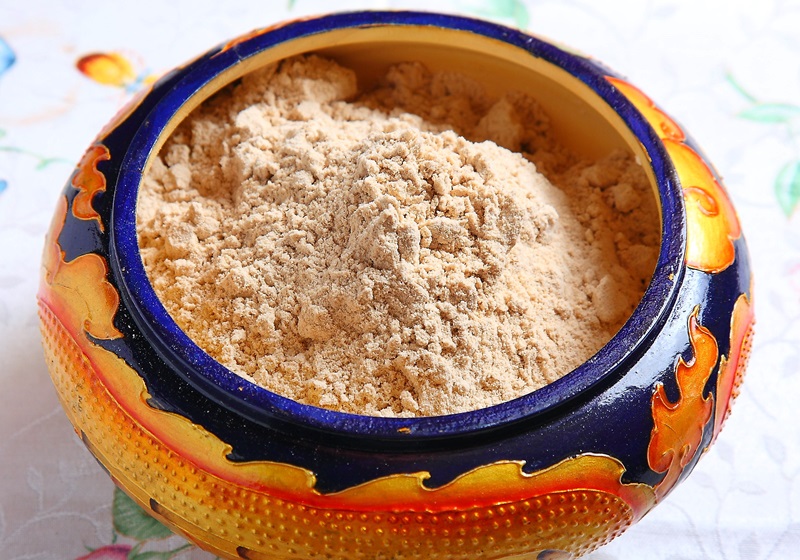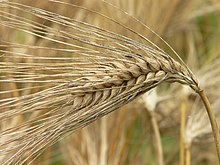|
|
|
Wholesalers: |

|
/ |
|
|
|
|
|
|
|
|
| "A good friend who points out mistakes and imperfections and rebukes evil is to be respected as if he reveals a secret of hidden treasure." Shakyamuni Buddha (563-483 B.C.) |
|
|
|
|
|
|
|
|
|
|
|
|
|
~Highland Barley Flour~ The best coarse grain in the world. The value and benefits of highland barley:

According to the "Compendium of Materia Medica" records: highland barley can lower the qi and widen the middle, strengthen the essence and strength, dehumidify and sweat, and stop diarrhea. The Tibetan medical classic "Jingzhu Materia Medica" even regards highland barley as an important medicine used to treat many diseases. Highland barley is cultivated in Northwest China, North China, Inner Mongolia, Tibet and other places, and the local people regard it as food. As stated in "Medicinal Properties": "Highland barley is similar to barley, with thin skin and crispy noodles. Southwest people rely on it as their regular food." Some scholars also believe that highland barley is difficult to digest, especially the unripe green ones. Eating too much will damage the digestive function and easily lead to ulcers. It is neutral in nature and salty in taste. It returns to the spleen, stomach and large intestine meridians. It contains protein, fat, starch and vitamin B. It has the functions of nourishing the spleen and stomach, replenishing qi and stopping diarrhea, strengthening muscles and muscles, dehumidifying and sweating. It is suitable for patients with spleen and stomach qi deficiency. People who are tired, weak, have diarrhea and loose stools should take it.
Lower blood sugar, blood lipids and blood pressure. Highland barley is rich in glucan, which is 50 times that of wheat. Glucan can effectively lower cholesterol, regulate blood lipids, lower blood sugar and blood pressure, thereby achieving the purpose of preventing cardiovascular and cerebrovascular diseases.
Removes constipation, eliminates toxins, and eliminates freckles. Highland barley fragrant rice is rich in dietary fiber, the total amount is 20 times that of wheat. Dietary fiber can cleanse the intestines, remove toxins from the body, eliminate freckles, and is a scavenger of the human digestive system.
According to experimental tests by the Tibet Autonomous Region Academy of Agricultural Sciences, Zhejiang University, China Technology and Business University, etc., the average beta-glucan content of Tibetan highland barley rice is 5.25%, with a minimum content of 4.26%. The content in the excellent variety Zangqing 25 reaches 8.62%, which is the highest among wheat varieties. 50 times the beta-glucan content. Beta-glucan has the effects of enhancing the body's immunity, regulating circadian rhythm, lowering blood sugar, preventing diabetes, lowering cholesterol, lowering blood lipids, preventing cardiovascular disease, laxative, and preventing colon cancer. According to clinical medical verification from the Beijing Armed Police General Hospital: diabetic patients who eat highland barley rice every day usually have obvious effects within 30 days. People with dry stools and stubborn constipation usually see significant improvement in 3 days. As people pay more and more attention to health, Tibetan barley rice is increasingly favored by people around the world. It is reported that highland barley rice is also rich in dietary fiber, which is the highest among all fruit and coarse grains. It can effectively remove the garbage and oil trapped in the body, achieve balanced nutrition, metabolic transformation, and replenish beneficial elements in the body. Modern Nutrition Expert advice: Modern people eat a certain amount of highland barley every day, which plays a very important role in physical health. People with high blood sugar are best to eat 100% pure highland barley rice continuously for 7 days, and then eat it with ordinary rice in a 1:1 ratio. , when the blood sugar is close to the normal value, it can be eaten long-term at a ratio of 1:2 or 1:3 with ordinary rice. When people with constipation eat highland barley rice, it can be mixed with ordinary rice at a ratio of 1:1 (three meals a day).
There are also taboos on eating highland barley
Who should not eat highland barley?

People with digestive problems. People with digestive problems (for example, gastric ulcers, duodenal ulcers) are not suitable to eat whole grains, because these ingredients are rough and physically rub against the gastrointestinal tract, causing wound pain. People who are prone to bloating may feel uncomfortable after eating too much.
People suffering from digestive system diseases. If you suffer from liver cirrhosis, esophageal varices or gastric ulcer, eating a large amount of highland barley can easily cause venous rupture and bleeding and ulcer bleeding. Reminder: People with gastrointestinal diseases should not eat too much buckwheat, because buckwheat is prone to indigestion problems; they should also consider eating soybeans to avoid flatulence.
People with anemia and low calcium. Cereals are high in phytic acid and oxalic acid, which can inhibit calcium, especially iron absorption. Therefore, people with calcium deficiency and anemia should eat wisely. For example, milk cannot be eaten with whole grain rice to avoid being unable to absorb calcium. quality. In addition, the blood matrix iron contained in red meat is not affected by phytic acid, but most elderly people are afraid to eat red meat. In addition, if you blindly eat whole grains for health, it will be very bad. Some people eat too many grains and suffer from anemia. Can't be improved. The same goes for women. If you have anemia and like to eat whole grains, you must supplement your diet with red meat. Half of your daily meat sources must be red meat.
Kidney patients. Kidney patients need to eat refined white rice instead. Because the protein, potassium, and phosphorus content of whole grains are relatively high, it is easy to eat too much as a staple food, and the patient's body cannot tolerate it.
Diabetics. People with diabetes should control their starch intake. Even if they eat whole grains, they should also control the portion size. Moreover, although whole grains are rich in fiber and can help lower blood sugar, and medical staff encourage diabetic patients to eat them, once diabetes is complicated by kidney disease, they cannot eat whole grain rice and have to go back to eating refined white rice. Many patients are confused by this. Incessantly.

Original URL: https://read01.com/MJ6MAB.html
|
|
|
|
|
|
|
|
|
|
|
|
|
|
|
|
|
|
|
|
© 2025 Zambala inc. All Rights Reserved. No part of this site may be reproduced without our written Permission.
Service Mail: ZambalaLLC@gmail.com
Phone: (626) 289-9787 or 1(888)Zambala (926-2252)
Fax: (626) 289-9719
1904 West Valley Blvd. Alahambra, CA 91803 USA
Unless stated otherwise in content's license. Design By
|
|
|